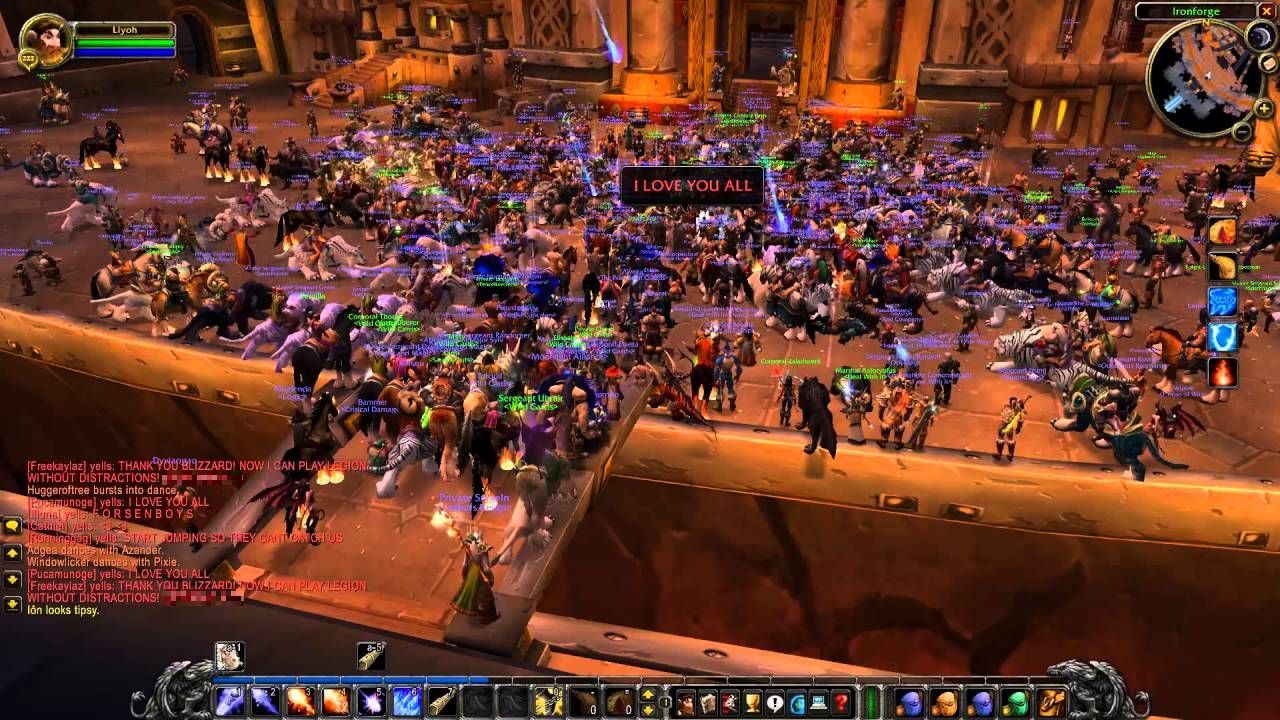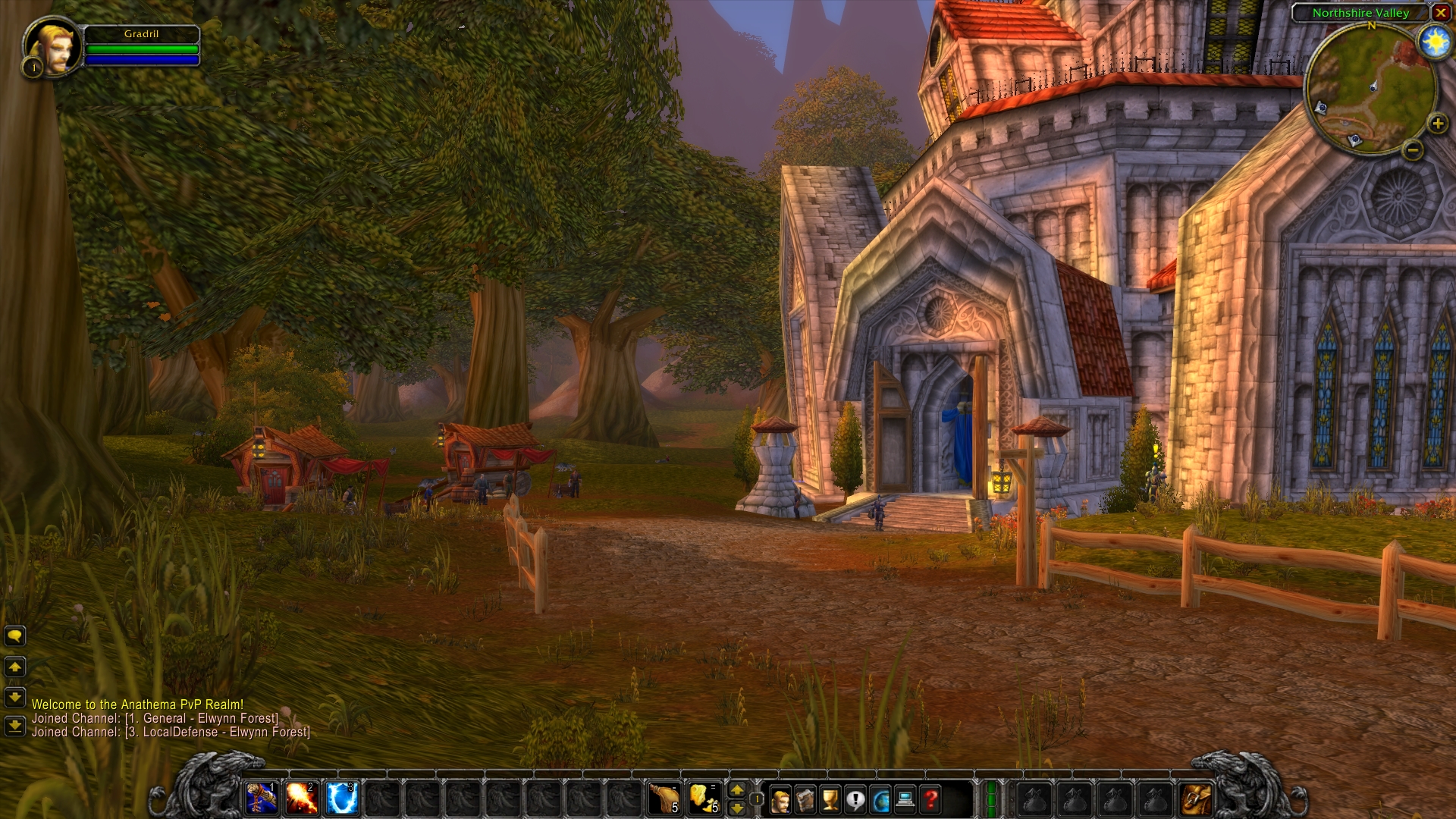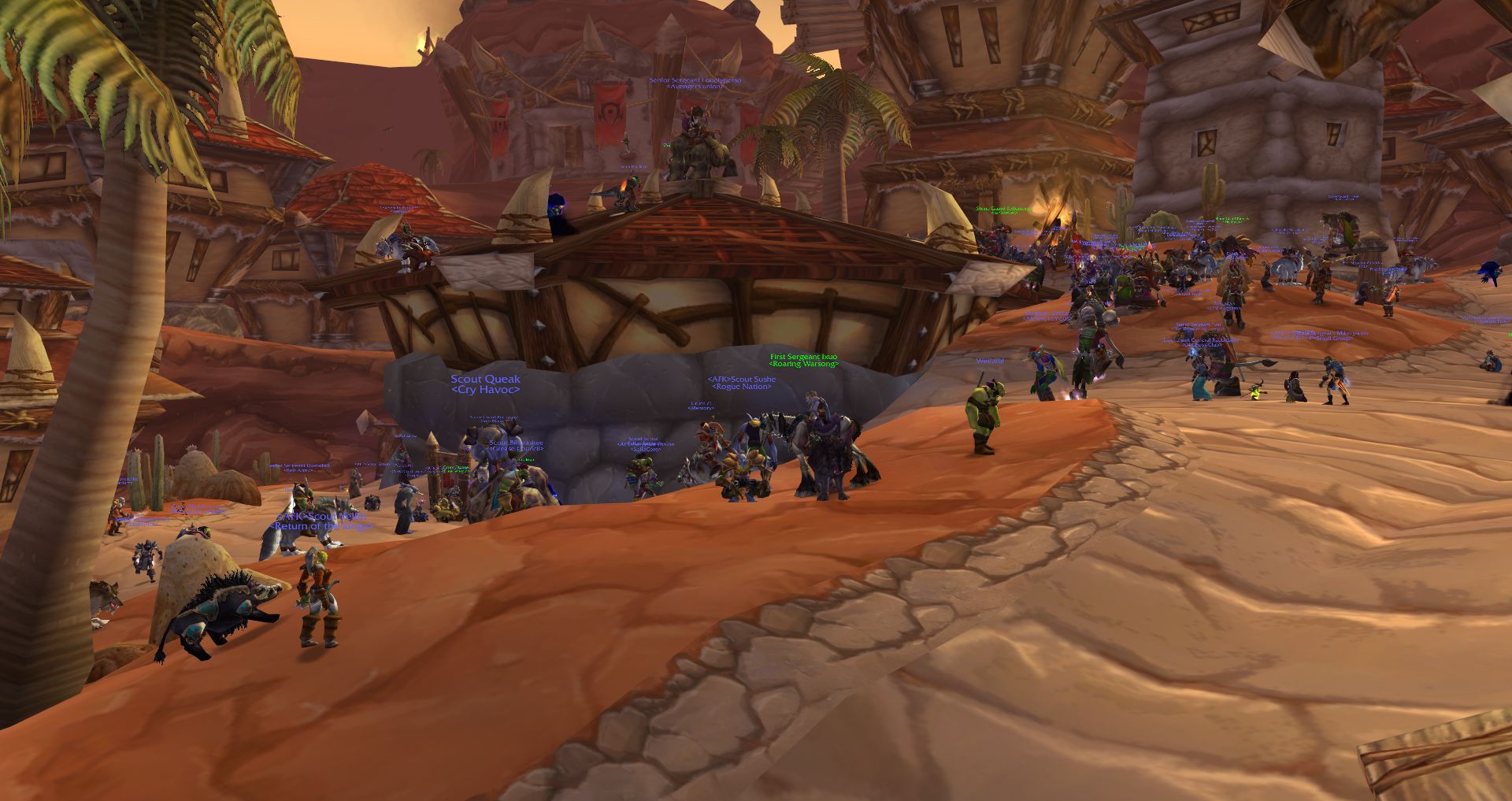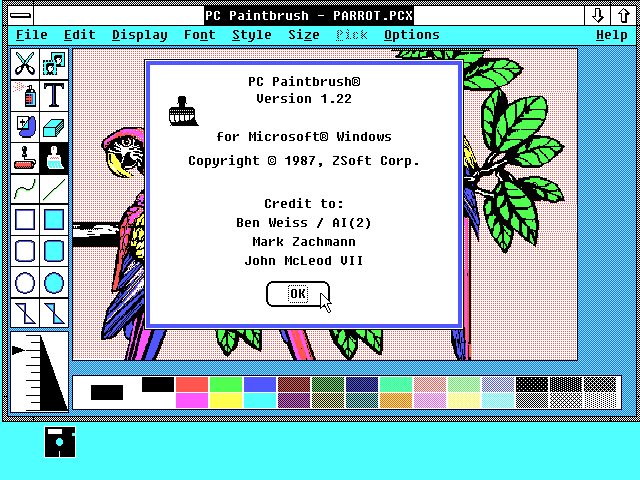Category Archives: News
Intel processors revealed to have major flaw, only addressable by OS updates

UPDATE: I’ve been trying to find out more, but Intel is now claiming it has a fix for the vulnerabilities affecting its chips that it will be rolling out by the end of next week. Details are slim, and I will hold off final judgment of course, but I’ll be surprised if it’s completely effective; these microcode patches can be tricky – it’s not a straight firmware update as it impacts the fundamental operation of the CPU. Additionally, it appears the fixes only address the last five year’s worth of processors. Better than nothing if it works.
Original post follows:
This is bad. It has been announced that Intel processors going back approximately ten years have a major flaw in how they separate the system and software. The details have not been released, but the general idea of the problem is already understood for the most part. To give a very high-level overview of what is going on and the impact of how it needs to be addressed, there is a component of every operating system known as a kernel, that separates the hardware from the software. When a program needs to open a port or save a file to disk or access a printer, or utilize hardware in any other way, it hands off that request to the kernel using what’s known as a system call, and the kernel completes the request (user mode to system mode). The catch is, the kernel is hidden from the program, even distributed in various memory locations to further hide it so that it can’t be exploited by malicious actors; it has to be loaded at system boot, however, in order for programs to use it.
Intel processors, though, use a kind of predictive processing, similar to client side prediction in games, in which a guess is made as to what will most likely happen next. In the case of Intel processors, they try to guess what code will be run next and load it up in the queue, however they apparently do this without any security procedures. The kernel is kept separate because it can contain confidential information such as passwords (which is why you can’t even get your own passwords back and there is no way to recover them if lost), however if the CPU provides no security check when loading up predictive code, it could, theoretically, run code that would ordinarily be blocked, which could then give savvy attackers access to low-level system processes and data.
But wait, there’s more bad news! Because this can’t be fixed with a firmware update or anything similar, OSs have to be written to address the problem. Linux, Windows, and OSX will all require updates that relocate the kernel in memory. Normally, it’s available to each program in their own process, but that will no longer be the case, and having to go back and forth between user mode and system mode in this manner will incur a possibly-significant performance hit on a PC after these updates, estimated by some to be as high as 30 percent.
Again, the details aren’t yet fully known, and the impact isn’t either, but if proven true it could be the worst design flaw I have ever seen. I’ll update when more is known.
Private WoW server Felmyst shut down in one day

There is, perhaps, a not-so-unknown secret in the World of Warcraft community that many people are unhappy with the way the game has evolved. Streamlined interactions, fast travel, the loss of talent trees, major changes to the landscape (such as the now-flooded Thousand Needles), rapid leveling, repetitious quests, questionable lore addons, and so on. It is also relatively well known that because of the longing some players have for the much more involved, grindier, slower-paced, talent-centric nature of the original WoW, private servers, meaning ones not run by WoW developer Blizzard, have popped up all over the place.
One of the best and most stable of these private servers was Felmyst, a four-year labor of love by a developer known as Gummy, who suffers from Musular Dystrophy and is for all intents and purposes, homebound. Well known in the private server community, both Gummy and Felmyst were doing well, with a stable build and a solid user base. However, a mere one day after the Felmyst servers finally went live, Gummy received a Cease and Desist order from Blizzard. You can read the gory details over at Ars Technica, and I should also mention that I was going to post Gummy’s formal announcement about the shutdown that he posted to his website, however the website went offline just one day after he posted that. For a four year project, it vanished into thin air very quickly.
UPDATE: Apparently his response is back up on felmyst.com, but for how much longer I can’t say. Here it is:
If you’re the lazy type who doesn’t like to click on images, here is what he wrote:
Felmyst
I began this project roughly four years ago and last year when Blizzard began taking action more seriously it weighed heavily on me as not only was I already heavily invested into the work but others around me were as well. Because of my health situation I wasn’t in a position to cut losses and start over on something different, at least not something that would take four years to make. Last year’s news of what Blizzard was doing came at the absolute worst time for me, frankly, with so many years already invested. To explain what may appear as an odd series of decisions it seems worthwhile to disclose my condition, muscular dystrophy, which only one other person in the online sphere knew of until now.
Of course, that is why I’m not able to pick up and move to another country as an alternative means to host the server since I’m not really able to live on my own. That is also the reason I’ve been able to work mostly full time on this project as I’m unemployed, though I have sacrificed much of my well being dedicating everything I have to this. Why am I disclosing this? I’m not really sure, but I feel compelled to.
So the question instead becomes: why host it yourself? The problem with that is our popularity snowballed way too fast once the release date was set.
Before the release date was declared, most people expected the server to flounder with a small population, the irony of which quickly became a meme. Therefore, months ago I saw no reason to hand all of our work over to someone I didn’t know when the project had a reasonable chance to stay small enough to avoid the need. Though I have no problem contributing to honest developers, the market to wrongfully profit from this stuff is much too lucrative to hand it out on a whim. Had we time to smooth out the release, this certainly would have been something to explore. The warning signs to expect notice from Blizzard were there but receiving it that quickly was something I don’t think many expected.
So why did I make this project? I love the game and community, especially the community. The old game was a great way to meet people and see new faces. It makes me happy, and programming makes me happy. Of course, I am sad that things didn’t turn out the way I’d hoped but I don’t think I’d change any of the decisions I made. I gambled that we could cap the servers at 3k and enjoy a close community. Sadly, I did not win that gamble, though on some level it was nice to see so many people eager to enjoy something I worked on. This project gave the last four years of my life a sense of purpose that I thoroughly enjoyed.
So why not tell people of that plan ahead of time to stifle hype? The problem with private servers is that there is no middle ground. If people expect a server to “only” have 3000 (real) players then they just won’t play and you’ll instead end up with 300, which isn’t playable.
A lot of people are of course asking for the source code. Although it may not be in my best interest to distribute the whole thing in its entirety at this point, I’ll see what I can manage that would be beneficial to other programmers who are still learning.
Gummy
gummy52facebook@gmail.com
All of this rubs me the wrong way. The fact that the C&D order was delivered just one day after the servers went live even though Blizzard must have known about it years ago, that the servers went down so fast, that the website went offline so fast (but is now back), it was just scrubbed into nothing immediately after such a long development cycle. Maybe Gummy simply was spooked by having a multi-billion dollar company com after him. Some in the community said he should move his servers to another country to circumvent Blizzard’s attempt at shutting him down, however Gummy claims he doesn’t have the resources for that. Others were and are still imploring him to release the source code, however he states there are legal implications and ramifications to doing that and has therefore made no such commitment.
Another interesting legal wrinkle is that it is apparently not illegal to run a private server, the issue is distributing the client along with it that causes the problem. I don’t know the technicalities, but there has even been the argument that if you kept the servers up without including a client, which the Felmyst download did, there wouldn’t have been a problem. Again, I don’t know the specifics of the case and Blizzard’s claim to IP so I can’t comment on that. I can say that Gummy claims to have done most of the coding to get the thing up and running.
Frankly, I don’t know what Blizzard’s obsession is over not setting up a vanilla server themselves. They shut down Nostalrius, claiming the whole time they would work with the team to set up an officially-sanctioned legacy server, then just…nothing. Frankly, Blizzard lied to them, to us, and did so deliberately. On Nostalrius’ official site, you can read the latest announcement, from all the way back in May of 2016 – and note there has been nothing since – of how Nostalrius thought they would be part of something great and working with Blizzard to set up a legitimate vanilla server, not realizing they were being misled. To show how big the demand is for something like this, which incidentally would cost Blizzard very little to implement, this is a no joke screenshot from the last minutes of Nostalrius:
Seems like something people want.
So what can you do now if you wish to play the informally-labeled ‘vanilla WoW?’ You can do what I did, and switch over to Elysium. You have to get the client via torrent, but it’s stable, works beautifully, and for someone like me who still remembers being blown away when they first saw WoW, and longs for the difficult, slow, plodding, yet rewarding gameplay experience original WoW offered, it’s glorious going back to those early days; before Thousand Needles was flooded, before Durotar was as well, before the great sundering, before all of that. When Barrens Chat was as lively as ever, the Defias roamed free, you had to train skills, and find Mankrik’s wife, when some wore a Big Blue Dress and Alterac Valley could go on for days, when you had to suffer abysmal drop rates to earn your levels in order to pay 40 gold for a horse, it brought a tear of joy to my eye to relive those opening cinematics for the Undead and Tauren that hooked me right from the beginning. Its default graphics settings made the game look like I was back in its 2004 release date, but after cranking everything to max, the game looked beautiful.
Additionally, I set up characters on their Anathema server, which was recommended to me, however their Elysium server is much more populated. That’s good on the one hand as the opportunity for groups and simply interaction is higher, but it comes at the expense of gameplay as it can lag severely, although I suppose that is quite reminiscent of original WoW. On the Anathema server, things are better, but it is still well populated, runs smooth, and I personally feel has a better balance, plus I still get to experience groups, Barrens chat, and and interaction. Here is a pic from Orgrimmar on Anathema, and as you can see it’s bustling with activity.
There’s even whisper spam from gold farmers!
The only real problem I had was naming my character. Every single name I typed in gave a ‘That name is unavailable” error, even some of the ones it recommended to me did the same! There were some other minor, non-gameplay related things: At one point I repeatedly took fire damage although I wasn’t near a fire, an NPC referred to me by the wrong name, and an NPC clipping through the world; he came back though. There is also only one server, so server time never lines up with actual time. Other than that, no troubles so far.
Well, except for this:
UPDATE: Recently there have been some major server crashes. Actually, I don’t know what the specific issue is, but today all action stopped, and never started again. I wasn’t kicked back to the character select or login screen, it didn’t freeze up, it just stopped responding. My character could run around, but that’s all. All other players in the vicinity vanished. It also was unable to login to the character select screen afterwards, and had to x-out (I play in window mode) to try again. This happened multiple times today, my third day in. It has been smooth until now, and a patch was just rolled out earlier, which may have something to do with it.
UPDATE II: The issue was fixed, however I lost about 40 minutes of progress.
As great as it all is, be warned: it is not for the faint of heart. It is the grindiest grind in grindville, however because it is (I think) Burning Crusade, you level up a little faster than pure vanilla. But it is also very unforgiving ear;y on for some classes. For a while, as a Tauren hunter, around level 8 I was dying more than I was questing. I spent a lot of time in black and white (meaning dead), and I would get stomped by same-level mobs. For every one I killed, I would be the loser multiple times. Enemies are densely packed, it’s very easy to draw multiple aggros, and you often have to proceed very carefully. Once I got a pet, however, the whole dynamic changed and it became much more balanced. In the brief time I spent with some other classes, rogues, druids and warlocks made it much easier to progress early on. Warriors and priests, not so much. I didn’t try the mage or shaman classes.
It’s been very fun returning to almost-original WoW. When it was first being hyped all the way back in 2004, I didn’t pay it much attention, reading about it in game magazines with only passing interest. When the beta rolled around I thought “What the hell, I’ll give it a whirl” and was floored by what I saw. Immediately hooked, I knew I was witnessing something, experiencing something monumental; both literally and figuratively game-changing.
In fact, I got so much out of original WoW, had so many good experiences (I’ll never forget a higher-level Alliance chasing me all the way from Thousand Needles to Un’Goro crater, where I jumped over the edge and slowfell to the ground below, escaping my pursuer, only to be immediately devoured by a dinosaur. Good times.), I actually bought the Bloodscalp server on which I used to play when Blizzard auctioned it. It’s a prized possession.
I never played Alliance because they’re the dirty, stinking Alliance.
So if you have never experienced original WoW, if you are a latecomer, if you want to know what all the fuss is about, if you wax nostalgic for the more pure version of the game, then I encourage you to try out a vanilla server and see what you think.
I’ll update as I continue on. In the meantime, here are the original intros for the Human, Tauren, and Undead races, all recorded at max settings off Elysium’s Anathema server. I also included a very brief bit of running around to give an idea how it looks.
Goodbye, MS Paint

Microsoft is removing a big collection of stalwart programs that were part of all our…well, my and my peers’…childhoods when they release the Fall Creator’s Update later this year. Screensavers are on their way out, as is Outlook Express. Some functionality such as Reader is being rolled up into Microsoft’s Edge browser. To be clear, many of these features are being deprecated, which means they are no longer being developed. In big-technology corporate-speak, however, that means they are soon to be removed altogether, although in fairness some Windows features have been deprecated for decades but are still part of Windows. Plus, the Creator’s Update will also introduce neat new features such as picking up on one device where you left off on another, as well as VR / AR features currently in development, including hardware and controllers. If you’re interested, you can read all about the Update straight from Microsoft.
The part of this that everyone is up in arms about, however, is the impending removal of MS Paint. This seems to be the thing that is garnering the most response, and causing people the most grief, or at least the most coverage. Originally developed by ZSoft as PC Paintbrush, it was licensed by Microsoft and included with Windows as Microsoft paintbrush, later changed to MS Paint. It was even originally sold with a mouse, as they weren’t such a common input method at the time.
Here’s CGA PC Paintbrush, with four colors on the screen at a a time, out of 16 possible colors. Note the way they tried to increase the available colors with textures and patterns. Good times.
Here’s a VGA version:
Of course, the reason Paint is causing such a stir is because so many people have used it for so much. We all used it just to make nonsense little drawings, and in its more recent versions it was not too bad for cropping, resizing, even making small notations like arrows and circles and whatnot. One person was even able to use it to draw the Mona Lisa. We’ll keep all the memes, rage comics, country balls, and everthing else out of this discussion, we’re trying to be serious here!
It’s being replaced with Paint3D, which is already included in Windows. In many ways it’s the same as Paint, and in many ways it isn’t, but it works well enough for cropping and resizing, and of course you can make nifty 3D scenes. I personally use IrfanView for cropping and resizing, which is quite easy and offers a lot of features, but to each their own.
Even so, the removal of Paint – if it does actually get removed – is the end of an era for Windows. I’ve been messing with it for longer than thirty years, and I’m sad to see it go. Not because it was an important part of my toolbox, at least not anymore, but because it had simply been around so long, and I always knew it was there; it’s like when the neighbors who always smile and wave, yet you never talk to, move away. Oh well, time marches on. I’m sure it’ll always be there in spirit, and available for download for the die-hards.
Amazing LED backsplash tiles

Now here is something beyond nifty. A company called All Things LED (Be aware: The site is very slow, probably because it’s from Canada, eh) is apparently in the process of developing LED backsplash tiles that can show animations as they they were a pseudo movie screen. Before I get in to more detail, take a look at this video and be amazed:
According to their FAQ page, they did not expect their invention to become as popular as it did, and therefore they don’t have a lot of specifics regarding mounting, availability, installation, etc. They do say it will run $150 per square foot, so be prepared to pay out the sap hole. Additionally, I had read on their site that they have a bespoke controller to control the animations, similar to what is used to control Christmas light animations, and that you can upload your own animations as well, however very curiously both pages that had that information now lead to 404s. I wonder why, perhaps it has something to do with being overwhelmed by the response.
Anyway, I love this kind of stuff, the animations are remarkable, when i designed my kitchen I wanted something very warm and subtle so this probably would not have been terribly appropriate, but I wouldn’t have been able to resist, I’m sure. The snowflakes, the underwater video, the skull motif, at one point they’re even showing a hockey game, of course. I could probably do without the fire, though, that’s something my kitchen can do without. Very neat overall.
Pentagon may ban Kaspersky AV line

Bloomberg and others are reporting that the federal government is concerned about the widespread use of Russia-based Kaspersky Lab‘s antivirus products, which have been in widespread use around the world for almost two decades. High-ranking U.S. officials, including current acting FBI Director Andrew McCabe and Director of National Intelligence Dan Coats, who both gave congressional testimony related to Kaspersky, have voiced their concerns even going so far as to say they would not feel comfortable using the product in their own homes.
Times have certainly changed. I have used Kaspersky extensively over the years and never had an issue with it, nor any reason to suspect that, because of its being developed in Russia, it was anything other than an effective AV product. Speaking of which, it really is, at least in my personal experience, and apparently that of others; it’s very well-regarded. Tom’s Hardware lists it in their #2 and #3 spot of best AV products for 2017. PCMag.com lists it as their #5 choice. Windows Central has it as #3. Howtogeek noted it, along with BitDefender, found 100 percent of threats and even lists it as ‘the absolute best.’ Even MacWorld lists it as #5 for Mac protection. Their Wikipedia page, a site to which I am usually loathe to link, lists a slew of additional achievements and accolades. I have recommended it for years and have never balked once at doing so. Perhaps I’m not enough of a conspiracy theorist, maybe I should be more of one, but I find it hard to believe a company with almost half a billion users worldwide, the respect of the computing community, and the list of accomplishments it has as a product and company, would compromise their robust integrity by colluding with a nation of any sort, not just Russian.
On the other hand, as much as it hurts me to say it, such are the times in which we live. In the video on this ABC News page, which incidentally is where you can see brief bits of the FBI and National Intelligence Directors giving their congressional testimony, is an image of Kaspersky founder Eugene Kaspersky with Vladimir Putin. I personally don’t think that’s an indicator of anything; many business people meet with members of their respective governments, and others, all the time. To me personally, absolutely nothing stands out about this picture. No evidence has been provided as to why exactly Kaspersky now suddenly poses a threat, other than the current political climate. As all my students know, I never allow politics to seep into my classes unless it is absolutely necessary, however, we are where we are at this moment in history, and Kaspersky is an enormous juggernaut of a (Russian) company. Although they have offered to turn over their source code in an effort to prove their legitimacy, I suppose the security machine here in the States would like to be safe rather than sorry.
I, on the other hand, being the eternal optimist that I try to be, will for now continue to recommend them and hope they have not been compromised by political pressure. If you are concerned, there are many, many other options from which to choose. The aforementioned and previously linked BitDefender is solid, as is Avast, I’m not a huge fan of AVG, another long-time stalwart that I used to use in the past, but it does work well, overall, and its reviews are generally strong.
Continuing on the security thing, you should also use a dedicated anti-malware package, and nothing equals MalwareBytes. I use it on Mac, PC, and mobile, and recommend running it daily; bad things can happen in an instant.
I am completely OK with this

Now this I have no problem with whatsoever, although it hints at a larger issue. Researchers at University College London have discovered a dormant but massive Twitter botnet comprised of an estimated 350,000 fake accounts that does nothing but tweet out random quotes from Star Wars novels.
They discovered it quite by accident while taking a pure random sample of English-speaking Twitter accounts. It’s important to note the importance of this sampling method, as other methods of sampling might bias the results in favor of those accounts that are more active or have more followers. Their one percent sample resulted in approximately six million accounts.
Once their random sample was complete, they plotted the geographic distribution of these users, and they discovered something curious. Many of the tweets formed an almost perfect rectangle along latitude/longitude lines, including open, uninhabitable places like frozen tundra and bodies of water. They conjecture the shape was deliberate to mimic where English-language tweets are most likely to originate, and hide them within the clutter of legitimate Twitter users Tweet flood.
Upon further investigation, the researchers found another surprise. All these Twitter accounts did was tweet out random passages from Star Wars novels. They also never retweet, they send out very few tweets (around ten total) and list ‘Twitter for Windows Phone’ as the tweet source. As much as I hate to say it, that is also likely a ploy to get them to stay under the radar as much as possible because of that platform’s significantly low user base.

It’s not Twitter, but Darth Vader actually posted this on Instagram. Seriously. He doesn’t even care about that stormtrooper behind him.
Using a machine-learning word association approach (a ‘classifier,’ although classifiers are not limited to word association), it found that actual users had a very wide distribution of word choice, while the bots used words almost entirely related to Star Wars. Additionally, the platform percentages were evenly distributed for the most part among real users while the botnet was one hundred percent Twitter for Windows Phone. When the numbers are examined, the botnet is easy to see.
The authors then discuss the implications. Clearly, a dormant, low-activity Star Wars-themed Twitter botnet is not a big deal. However, if the creator decided to reactivate the botnet in order to create a spam network, send malicious messages, or use it for other nefarious purposes, they could. I personally don’t believe that will happen as it likely would have already, however as the authors also note, the botnet went out of its way to stay under the radar.
One of the things I find most interesting about it all is that the authors hint they found another, even more massive Twitter botnet using the same approach, which they will be reporting on at a later date.
Really interesting stuff, and touches on the impact of social media, machine learning and AI, cybersecurity, and geolocation/geotagging just to start (as well as the curious motivations of this particular botnet’s creator). I very much recommend giving it a read.
Panasonic introduces a transparent TV

Transparent screens are nothing new, at least not in science fiction. The most well know, I would argue, is the interface from Minorty Report, as seen in the header image, but there have been many others. Consider, for example, the PADD (Personal Access Display Device) from Star Trek, which was only made transparent recently. Also, they weren’t very good at naming things.
There is also the tablet being used by Liara from the popular video game Mass Effect 3.
And let’s not forget Avatar. Or The Avengers. Or The Empire Strikes Back. Or Futurama. Or even this thing that lets you interact with the screen from the front and the back. There were even rumors floating around that Apple was going to be introducing a transparent iPhone and iPad, with some going so far as to render their interpretation of it.
It seems the main point behind these is to make them look more future-y, however while they are certainly technically feasible, their practicality is open to debate. A transparent screen leaves open whatever you’re doing to the eyes of everyone around you, there would be no privacy and a serious lack of security.
But what about a TV? A transparent TV that you use for watching, but when you’re not watching it, it just…disappears? Fades into the decor of the house, perhaps, without actually having to motorize it or hide it somewhere.
Panasonic has done just that, developing a TV using OLED technology, in which pixels give off their own light, in order to create a TV that is legitimately watchable while in use, and almost completely transparent when not. The catch is that the screen is made from a fine mesh which is then overlayed on actual, transparent glass. You don’t see the mesh when it is off, and you don’t notice it when it’s on. Genius.
It’ll be a few years before we see any type of commercial availability, but in the meantime, enjoy a gif of the process as seen on The Verge, who, I might add, really don’t want you downloading their gifs.
Nike announces self-lacing shoes

What a time to be alive! Nike has announced that it’s HyperAdapt self-lacing sneakers will finally, FINALLY, be available on November 28th. You can read the press release at this link.
I’m not sure why, but there seems to be more hyperbole around this than is normal for a product release, even in the press announcement. For example: Nike’s own press release, linked above, is titled “Nike HyperAdapt 1.0 manifests the unimaginable.” Transworld Business titled their article about these shoes (and I am not making this up), “Transcending time, space, and our perception of reality, Nike has brought us the shoe that no one that (sic) possible outside the realms of science fiction: the HyperAdapt 1.0.”
Let’s not get carried away. It’s a neat thing, but it’s not a future-breaking invention that will unite the world in harmony. Also, I wonder if “self-lacing” is the right term. You see, they don’t actually lace up like a ghost is tying your shoes. Rather, they tighten; a motor in the base of the shoe pulls what looked like pre-laced laces tighter until sensors deem they’re tight enough, and of course the person wearing them can make adjustments if necessary. The motor that does it is rechargeable, and there are lights in the shoe to indicate the status of the charge.
Here’s a video about it, one that goes beyond mere promotion into the realm of world-saving, but these kinds of things have started to concern me. Is this a sign of encroaching laziness, or a useful feature that we need? I can tie my shoes, and do so to just the right amount of pressure. Do I need a self-lacing shoe? With self-driving cars, self-cooking food, self-playing guitars, and whatever else doesn’t need a human, where does it end? I know it’s just a shoe, but that’s exactly why it’s concerning.
And what happens if the motor malfunctions? Or the battery dies? Oh, the humanity!
University of California, Irvine, becomes leader in eSports

My employer, the University of California, Irvine, has become the first university to open an eSports arena, which is really just a big room with a bunch of high-end PCs in it for networked game play, and have a top-ranked League of Legends team that will be awarded scholarships for their participation.
Other colleges and universities have had school-sponsored eSports teams before; Robert Morris University did so back in 2014, and others followed suit, however the arena is what sets us apart. A dedicated gaming facility created with the blessings and support of League of Legends developers Riot Games and machines supplied by boutique PC source iBuyPower (terrible website design trigger warning).
The arena can also be used by students who just want to do some gaming. And because we’re a university, there will be many, many opportunities for game-based research, something my own department does from many perspectives.
The official opening will be on Friday, September 23rd, and they are expecting about 1000 people. I’ve been in that room and that area of campus, and that would be quite the crowd, but it speaks highly of what they’re doing and what they’ve already accomplished.
Intel recalls all Basis smartwatches due to burn risk

I like to think I’m pretty up on the tech scene, but the first I’d heard of Intel’s Basis watch (Intel bought Basis for $400 million so they could enter the smartwatch market and diversify from their core chip business) was a slew of articles claiming they are now all being recalled because they can burn you. And not just burn you, burn you to the point of blistering your skin. Lots of technology gets hot, heat is a byproduct of chip architecture, but a watch that gets so hot it will burn your skin? Come on, Intel, of all companies.
In their defense, they say it’s only been an issue with .02% of all watches, and they first issued a warning back in June, but it looks like it’s starting to become more of a problem than they anticipated. So if you have a Basis watch, you can return it and any accessories you might have picked up to go with it to the retailer and get a full refund.
Oh, one other thing, from what I understand they were pretty good watches.














